Fashion + Design > Fashion
April 29, 2023
Fashion-For-Future-Masterclass mit Borre Akkersdijk
Susanne Barta
Borre Akkersdijk habe ich bisher nur auf Zoom getroffen. Und dass er geradezu ein Star der internationalen nachhaltigen Textil-Community ist, habe ich erst im Laufe einiger Gespräche mitbekommen. Aart van Bezooijen, Professor an der Fakultät für Design und Künste der UniBz und Co-Organisator unserer neuen Plattform „Fashion For Future“, hat ihn im Rahmen des Workshop-Programms zu einer Masterclass eingeladen. Borre hat Textildesign studiert, in Eindhoven seinen Abschluss gemacht, Modedesignkurse am Fashion Institute for Technology in New York besucht und auch für die legendäre Trendberatung Studio Edelkoort in Paris gearbeitet. 2012 wurde er bei den Dutch Design Awards für seine Forschungsarbeiten über die Zukunft der Mode als Jungdesigner des Jahres ausgezeichnet. Für Fashion For Future wird der niederländische Textildesigner und Mitbegründer des Textilinnovationsstudios BYBORRE am Donnerstag, 4.5. von 10:00 bis 12:30 online eine Masterclass zu „CREATE Online Design“ anbieten. Noch gibt es Plätze.
Borre, what has to change in the fashion industry?
First, we have to move to a fully transparent supply chain. Then we have to look at what is called the sell-through (the ratio of goods sold by a retailer to the quantity originally delivered to the retailer from wholesale) and understand which garments do really come to and are used by the consumer. Because if the garments don’t arrive at the consumer, then we have to start producing less. That’s the direction we have to move: buy less but better. And use more what we have. 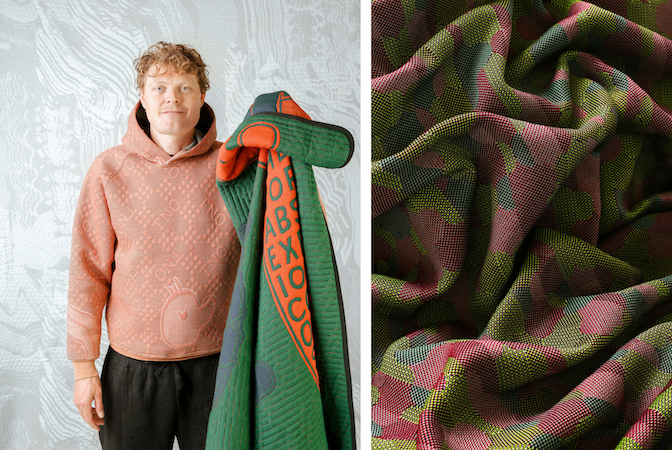 How can a responsible textile production look like?
How can a responsible textile production look like?
First of all, it needs to be fully transparent in all the steps of the supply chain. From raw materials, how they are sourced, how they are made into yarn till the machine manufacturers, how much energy is used and everything in between. Knowing what is available and where it needs to be covered and supported by digitization. And to make it accessible. Then accessibility and digitization will create a local production chain at scale. Back in the days, it was local but not at scale then it became global. Now we need it to be at scale for local realities so we do not need to ship and send around resources all over the world.
What role do companies play in this? What role consumers?
The direction we are heading right now is that end consumers just use the garments. But actually, the producers/brands should be responsible for the raw materials and how they are re-used or how they are coming back in their own supply chain. Here lies a big responsibility for the companies to open up the sell-through numbers and their links to the consumers, asking them to return unused garments.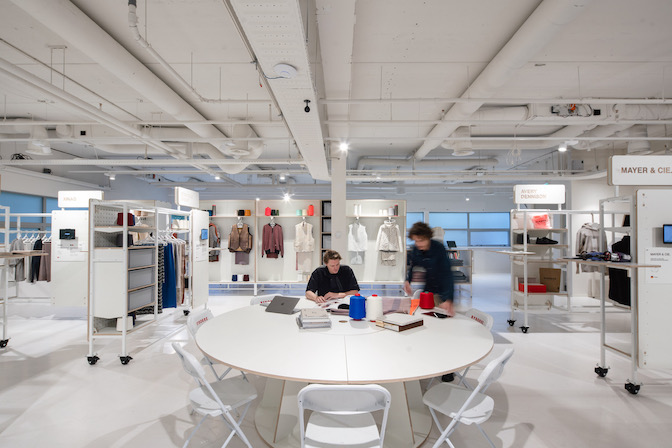 Does it need more legislation?
Does it need more legislation?
It is coming! There is different legislation in each part of the world. You also see that in different areas for example furniture, different rules apply. There is a need for standards to create better textiles for longer use.
How does Byborre contribute to the change?
We are an example of opening up our own supply chain. Not only opening up what we do but also making it accessible for others. We are thinking more like a platform, by giving access to yarn and machine suppliers and giving access to the developing software. With our software everybody can design, anyone that has an idea about their textiles will be able to create a textile in a responsible and transparent way. 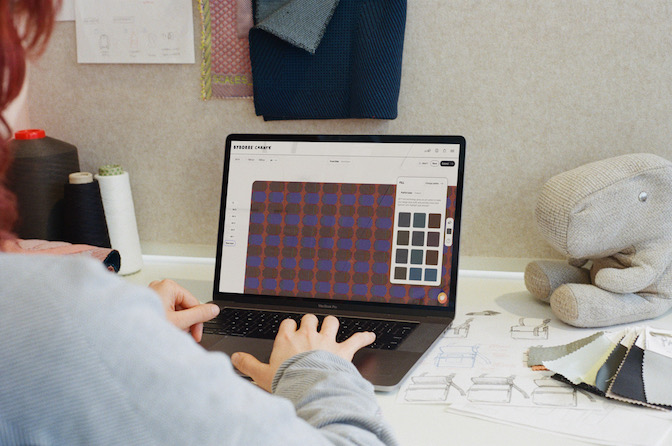 What can workshop participants learn in Bolzano?
What can workshop participants learn in Bolzano?
It will be an introduction to the medium of textile. Most of you are (Fashion) designers that use textiles in their daily life. Normally it is hard to get access to create your own textile from scratch. The functionality comes from construction, the fiber. But the most important thing is how to design your own design with your own DNA, your ideas and graphic vision into the textile for the end product (Interior, Fashion). It is about transparency and using the tool, how you can play with that and start asking the right questions for the future regarding responsible materials. Borre ist gerade aus Mailand zurückgekommen. Er hat dort das Projekt „The Elephant in the room“ vorgestellt, indem die Geschichten hinter dem Herstellungsprozess thematisiert werden, meist versteckt in den (unvollständigen) Produktbeschreibungen der Kleidungsstücke, die kaum sichtbar auf der Innenseite angebracht sind. Nach Mailand auf die Design Week, den Salone kommt er seit 18 Jahren. Heuer sei ihm aufgefallen, erzählt er, dass es offensichtlich immer noch vor allem darum gehe, zurück zur Realität vor der Pandemie zurückzukehren. „It is all about more, more, more but actually we have to go in the opposite direction.” Die neuen Narrative scheinen also, mit wenigen Ausnahmen, noch nicht wirklich vorzukommen. Sein Projekt habe viel Feedback bekommen, sagt er, denn doch einige Unternehmen seien interessiert daran, sich den dringenden Themen entlang der Lieferketten zu widmen. „There are brands that want to tell a new story but the pressure of the industry is harsh.” Borre Akkersdijk und sein Unternehmen Byborre stehen für eine andere Realität, einen anderen Weg, wo es darum geht, weniger und besser zu produzieren und das, was hergestellt wird, so lange als möglich im Kreislauf zu halten.
Borre ist gerade aus Mailand zurückgekommen. Er hat dort das Projekt „The Elephant in the room“ vorgestellt, indem die Geschichten hinter dem Herstellungsprozess thematisiert werden, meist versteckt in den (unvollständigen) Produktbeschreibungen der Kleidungsstücke, die kaum sichtbar auf der Innenseite angebracht sind. Nach Mailand auf die Design Week, den Salone kommt er seit 18 Jahren. Heuer sei ihm aufgefallen, erzählt er, dass es offensichtlich immer noch vor allem darum gehe, zurück zur Realität vor der Pandemie zurückzukehren. „It is all about more, more, more but actually we have to go in the opposite direction.” Die neuen Narrative scheinen also, mit wenigen Ausnahmen, noch nicht wirklich vorzukommen. Sein Projekt habe viel Feedback bekommen, sagt er, denn doch einige Unternehmen seien interessiert daran, sich den dringenden Themen entlang der Lieferketten zu widmen. „There are brands that want to tell a new story but the pressure of the industry is harsh.” Borre Akkersdijk und sein Unternehmen Byborre stehen für eine andere Realität, einen anderen Weg, wo es darum geht, weniger und besser zu produzieren und das, was hergestellt wird, so lange als möglich im Kreislauf zu halten. 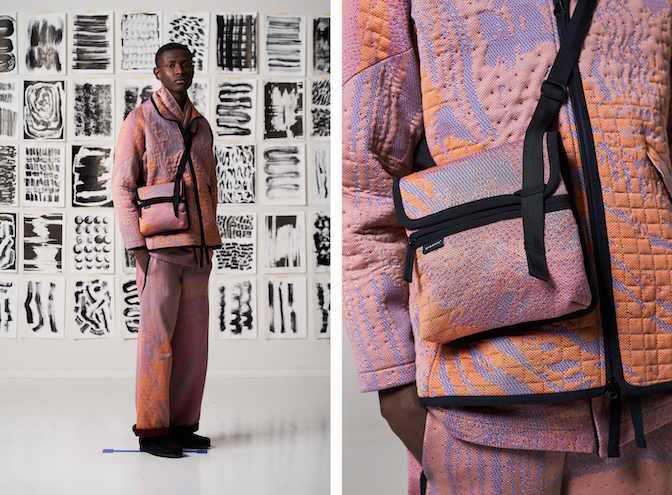 Für Borres Masterclass „CREATE Online Design“ könnt ihr euch über info@fashionforfuture.bz.it anmelden. Weitere Workshops und Infos zu den kommenden Veranstaltungen im Rahmen von Fashion For Future findet ihr hier.
Für Borres Masterclass „CREATE Online Design“ könnt ihr euch über info@fashionforfuture.bz.it anmelden. Weitere Workshops und Infos zu den kommenden Veranstaltungen im Rahmen von Fashion For Future findet ihr hier.
Fotos: (1, 4) © Byborre/Jordi Huismann; (2, 3, 5, 6) © Byborre; (7, 8) © Byborre/Tomek Dersuaaron
















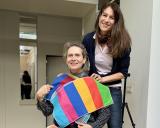

Comments